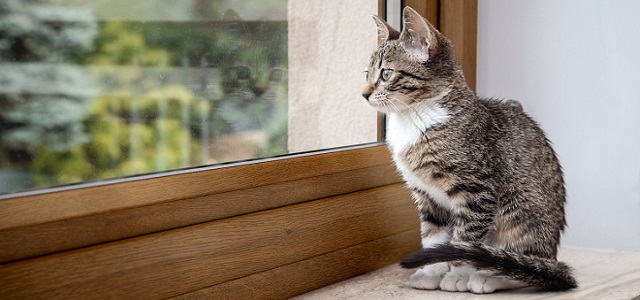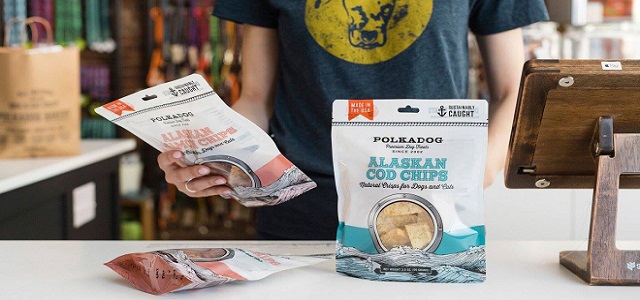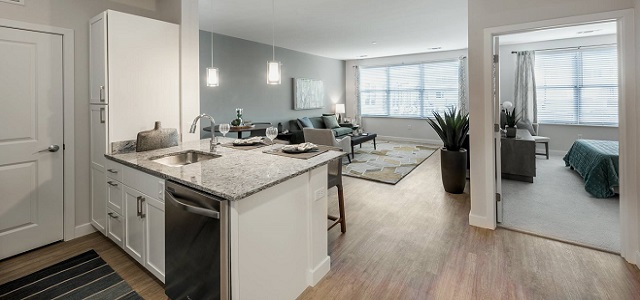6 Tips for Apartment Living with Pets

Photo Credit: Pexels
There’s nothing like coming home to your Boston apartment after a long day to a wagging tale and welcoming purr of your beloved pet. They’re arguably the best type of apartment roommate… After all, they don’t steal your groceries or borrow your clothes without asking, and are a constant source of companionship, entertainment, and unconditional love! With that being said, there are a few tips to keep in mind when living in an apartment setting with your cat or dog. Here are the 6 best tips we pass along to residents – two-legged and four!
1. Choose the Right Breed
This one speak more for dogs than cats, but if you’re currently an apartment dweller and are thinking of adding a dog to the family, consider which breed best suits apartment life. Some breeds in particular, like Border Collies, Shepherds, and Labs, are on the larger side and have high energy levels that may not mix well with small spaces. On the other hand, we find the following small breeds are popular among tenants:
- Bichon Frise
- Yorkshire Terriers
- Cavalier King Charles Spaniel
- Dachshunds
- Coton de Tulear
- Pomeranian
While pups of every size deserve endless hours walks and playing, smaller breeds can better adapt to playing indoors. A recommendation we have, too, is to check with your complex manager on regulations for dog breeds and weight restrictions. As far as cat breeds, any will do!

Photo Credit: Polka Dog Bakery
2. Prepare for House Training
Now, house training your pet in an apartment takes time, skill, and patience. As you prepare for this, stop by The Fish & Bone for supplies you’ll need. Here’s a breakdown of our tips for both cat and dog owners:
House Training Cats: This task isn’t as much a task for cat owners. All you need to do is let your cat know where their litter box is, and they’ll handle the rest. Just be sure to clean the litter box everyday to avoid smell. Have a scratching post set up to give your cat something to claw and stretch on (rather than your curtains and furniture!)
House Training Dogs: If you’re a new puppy parent, there’s a bit more work that goes into apartment training compared to an adult dog. Either way, establish where your dog will eat, sleep, and play. Since you don’t see too many dogs using litter boxes, it’s vital to get your dog on a regular walking/bathroom schedule to avoid indoor accidents. Potty pads are another option (just place them on a hard surface – not a carpet).
Remember, a job well done deserves a treat! Stop by Polka Dog Bakery for some Boston-inspired biscuits!
3. Choosing Houseplants
Did you know common houseplants can be toxic to pets? Scary thought, right? Well, rest assured that with a bit of preliminary research, you can proactively decorate your home without introducing dangerous greenery to your cat or dog. Keep the following common plants out of your home to ensure Fido and Whiskers stay safe:
Aloe, Calla Lily, Jade Plant, Kalanchoe, Eucalyptus, and English Ivy

Photo Credit: Landing 53
4. Protect Your Floors
If there’s one thing to remember when having an apartment pet, it’s your security deposit. This is not meant to scare pet owners, but money is most often deducted from security deposits because of pet damage – such as scratched flooring. But – you can help prevent this from happening! Area rugs and runners are a great option to protect hardwood flooring at The Parkside. Front door mats are helpful in collecting dirt from outside, too.
A Tip for Pet Owners: You’ll also want to stock up on eco-friendly, non-toxic cleaning supplies!

The Clearway Apartments in Boston
Just steps away from Boston's finest cafes, museums, and the iconic Fenway Park, The Clearway features one, two, and three bedroom apartments. Take a tour today!
5. Choosing Your Unit
When it comes to choosing an apartment with a pet by your side, there are a few things to keep in mind from complex to complex. The first is to score a unit with a balcony (or patio) on the first floor. There are a ton of benefits of this – for you, your pet, and for your neighbors.
- For You: Less flights of stairs to climb with bags of cat food, dog food, and litter.
- For Your Pet: Easy outdoor access for walks and play time.
- For Your Neighbors: Since no one lives under you, you don’t need to worry about the sound of pitter patter paws! But as always, try to teach your pup to keep it down with barking.
Having a unit with plenty windows is enjoyable for cats and dogs, too, so they can take a peak at outside activity (and know when you get home!).

Photo Credit: Fish & Bone
6. Hire a Dog Walker or Use Daycare
Dogs are a bit more needy compared to cats, in the sense that they need to be walked throughout the day. And yes, this includes those 8 hours you’re at work! Luckily for residents of Landing 53 and Cloverleaf Apartments, there’s nearby helping hands to keep your pup entertained while you’re away. Check out local dog walkers or pet daycare. Luxe Pet Resort is a 5-star option for cats and dogs alike!
Are you a new pet parent? What apartment living tricks have worked well for you and your companion? Share with fellow residents on the Forest Properties Facebook page!
Posted in Apartment Living | Tagged apartment living with pets • apartment tips for pet owners • making pets comfortable in apartments






